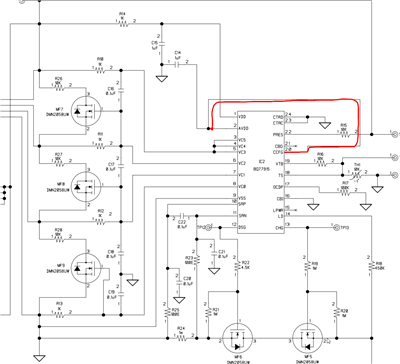Tool/software:
Hello all
I am using BQ77915 IC for cell balancing in a three cell battery.
I selected 3 cells whose voltages were 3.66V, 3.65V and 3.59V for charging.
I am using external MOSFETS as per the recommended circuit in datasheet.
I turned ON the charging circuit and the cells charged gradually. The voltages of all the cells increased gradually.
Some of the voltages captured at different time instances are as follows:
at Tx - 3.8V, 3.78V, 3.7V
at Ty - 3.9V, 3.89V, 3.77V
at Tz - 4.17V, 4.15V and 3.98V
The voltages were captured at more instances but I am not mentioning those here.
At Tz, the charging MOSFET was turned off.
Through out this charging time, I observed the signal on the oscillosope, at the drain of the external MOSFETS.
There should have been cell balancing pulses at any of the drain terminals. But there were none ; which means there was no charge balancing.
What could be wrong....



